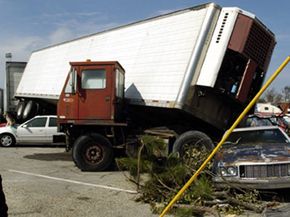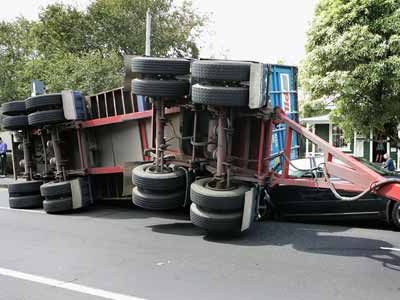We hear about it all the time in traffic reports -- tractor-trailers jackknifing on the highway. Hearing those words so often, it's difficult not to get numb to them. But these kinds of accidents -- which can be fatal -- are often preventable.
Jackknifing refers to the dangerous situation in which a vehicle and its attached trailer get out of sync during towing to form an L or a V shape. The phrase gets its name from the shape the truck and the trailer create, which bears a resemblance to a knife whose blade folds into the handle.
Advertisement
To know how to avoid jackknifing, you need to understand why it happens. Although a few different factors could cause a vehicle and its trailer to jackknife, it usually comes down to a loss of traction. Traction has to do with how well a wheel's tires grip the road. It's essential to what makes wheels work. You may understand the concept of traction if you've ever had a vehicle stuck in the mud as its wheels furiously and fruitlessly spun but couldn't grip the ground.
The wheel isn't considered man's greatest invention for nothing. The genius of the wheel is that it uses friction -- the force that resists motion -- to work. In particular, wheels use static friction -- the force between two unmoving objects. Believe it or not, as a rolling wheel touches the ground, that contact point is technically static -- relative to the ground. The more static friction at this contact point, the better the traction. A vehicle's wheels depend on static friction for enough traction to both move and stop controllably.
Unfortunately, slick roads and improper braking wreak havoc on this grip, causing tires to skid along the pavement instead of rolling. Skidding tires are resisted only by sliding friction, which isn't as powerful as static friction (consider how it's harder to start pushing a couch across a carpet than it is to keep it sliding). In this way, slamming on the brakes could have an adverse effect, causing them to lock and leaving the skidding wheel without enough traction to stop. If the tractor or the trailer wheels lock, the loss of traction will allow the rig to swing sideways out of control into a tractor jackknife or a trailer jackknife, respectively [source: California DMV].
Now that we understand the forces that let it happen, we'll go over how to avoid jackknifing with safe driving.
Advertisement



